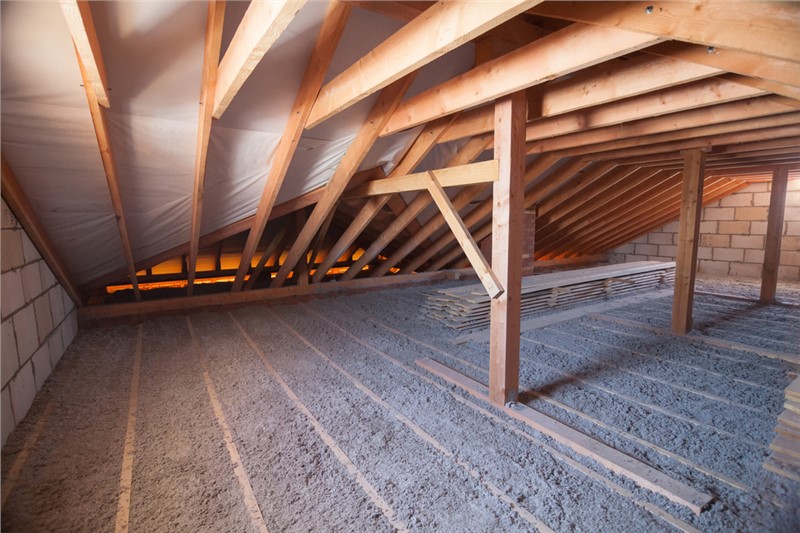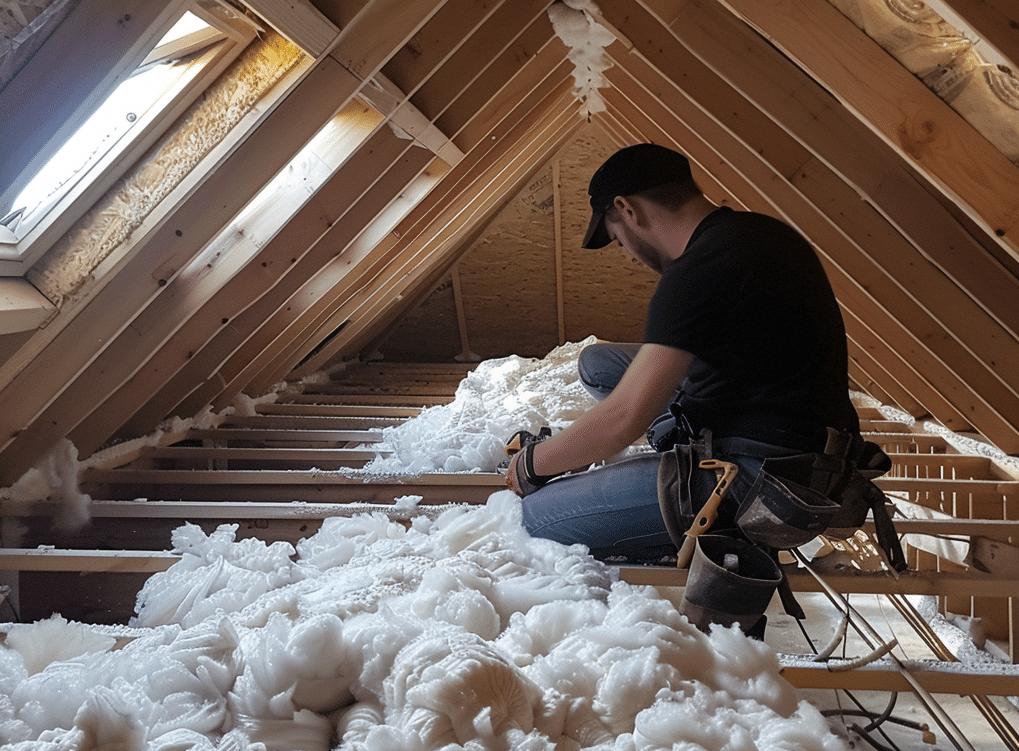How Attic Insulation DFW Can Transform Your Home's Climate Control
Discover the Different Kinds Of Attic Insulation and Their Distinct Advantages for Your Home's Energy Effectiveness

Fiberglass Insulation
Fiberglass insulation is one of the most generally made use of materials for attic insulation due to its exceptional thermal efficiency and cost-effectiveness. Made up of tiny glass fibers, this product properly traps air, creating a shielding barrier that helps maintain consistent indoor temperature levels. Its high R-value per inch makes it particularly effective at standing up to heat transfer, which is vital for power conservation in homes.
Installation of fiberglass insulation is reasonably straightforward, commonly available in batts or loose-fill types, suiting various attic room arrangements. Additionally, it is resistant and non-combustible to dampness, decreasing the threat of mold growth. This resilience adds to its durability, making fiberglass a sensible long-term investment for home owners.
Moreover, fiberglass insulation is commonly made from recycled materials, which improves its eco-friendliness. The product can additionally add to soundproofing, decreasing sound transfer in between areas. While it is important to use safety equipment during setup to stay clear of irritability from the fibers, the general advantages of fiberglass insulation, including energy savings and environmental considerations, make it a preferred choice for boosting attic room performance and promoting a comfortable living environment.
Spray Foam Insulation
Spray foam insulation is a highly reliable choice for attic insulation, recognized for its premium air securing and thermal performance. This innovative insulation product is made up of a blend of isocyanate and polyol resin, which, when combined, expands rapidly to load voids and dental caries in the attic room area. Its capability to follow different surface areas makes certain a continuous barrier versus air leaks, considerably lowering warmth loss during colder months and warmth gain throughout warmer seasons.
One of the key advantages of spray foam insulation is its high R-value per inch, which implies it provides exceptional thermal resistance in a reasonably thin application. This is particularly advantageous in attic rooms where area is usually limited. Additionally, spray foam can aid lessen dampness accumulation, decreasing the threat of mold and mildew growth, which can be detrimental to both the framework and indoor air high quality.
While the initial price of spray foam insulation might be higher than standard alternatives, its long-lasting energy cost savings, combined with increased comfort and improved home worth, make it a worthwhile financial investment for property owners seeking boosted energy efficiency. Attic Insulation DFW. In general, spray foam insulation sticks out as an efficient service for enhancing attic insulation
Cellulose Insulation

Cellulose insulation is a prominent option for attic room insulation, primarily composed of recycled paper items treated with fire resistants. This eco-friendly option is recognized for its excellent thermal efficiency, effectively lowering heat transfer in both summer season and winter season. The thick composition of cellulose permits it to fill up spaces and voids in attic room spaces, giving a seamless obstacle against air leakages.
One of the significant advantages of cellulose insulation is its capability to resist mold and insects, owing to the fire retardant treatments utilized during production. In addition, it flaunts a high R-value per inch, which equates right into premium energy performance. Homeowners can expect reduced home heating and cooling costs as a result of improved insulation.
Setup is usually completed with blowing loose cellulose into the wanted area, permitting a fast and effective procedure. This technique additionally lessens disruption to the existing framework. Cellulose insulation has a fairly reduced environmental impact, as its manufacturing process utilizes visit homepage recycled materials, adding to sustainable building practices.
Rock Wool Insulation
Amongst the different alternatives for attic insulation, rock woollen, likewise called mineral woollen, stands apart as a result of its remarkable thermal and acoustic efficiency. Made from all-natural or recycled products, rock wool is created by melting rock and rotating it right into fibers, causing a product that uses excellent insulation residential or commercial properties.
One of the considerable benefits of rock wool insulation is its high R-value, which indicates its efficiency in withstanding warm flow. This characteristic not just boosts energy effectiveness however likewise adds to maintaining get redirected here a comfy indoor temperature level year-round. Furthermore, rock wool is naturally fireproof, making it a much safer option for homes as it can stand up to high temperatures without melting or launching poisonous fumes.
In addition, rock wool insulation masters soundproofing capabilities, successfully reducing noise transmission between rooms and from outdoors resources. This makes it an excellent choice for home owners looking for a serene living environment. Rock woollen is moisture-resistant, helping to stop mold growth and maintaining the structural integrity of the attic room space. Overall, rock woollen insulation provides a thorough service for boosting energy efficiency, safety and security, and convenience in household setups.
Radiant Obstacle Insulation
Radiant obstacle insulation acts as a reliable remedy for decreasing warm transfer in attic rooms, especially in warmer climates. This kind of insulation works by mirroring convected heat far from living areas, consequently decreasing the amount of warmth that enters a home during heat - Attic Insulation DFW. Normally made up of an extremely reflective product, such as light weight aluminum foil, glowing obstacles are mounted in attic rooms, encountering the roofing, where they can intercept inbound heat from the sun
The main advantage of radiant barrier insulation is its capacity to reduced cooling costs. By reflecting heat rather than absorbing it, radiant obstacles can aid keep a much more steady indoor temperature level, reducing the workload on air conditioning systems. This efficiency translates into lower energy expenses and enhanced comfort for home owners.
In enhancement to power financial savings, glowing barriers can also add to improved interior air quality. By reducing warm accumulation, they aid reduce moisture levels, which can avoid mold development and enhance general air flow. When set up properly, radiant barrier insulation can be an important addition to any type of energy-efficient home, making it a click over here worthwhile factor to consider for home owners wanting to improve their attic insulation approach.
Conclusion
Finally, understanding the numerous types of attic room insulation-- fiberglass, spray foam, cellulose, rock wool, and glowing barriers-- makes it possible for home owners to make educated decisions relating to energy performance. Each insulation type offers special advantages, such as premium thermal resistance, wetness management, and audio attenuation. By choosing the appropriate insulation product, considerable reductions in power costs can be attained, along with improvements in indoor convenience. Eventually, the best choice adds to a much more sustainable living atmosphere and promotes total power preservation.

In final thought, comprehending the different types of attic room insulation-- fiberglass, spray foam, cellulose, rock woollen, and glowing obstacles-- makes it possible for home owners to make enlightened choices concerning energy efficiency.